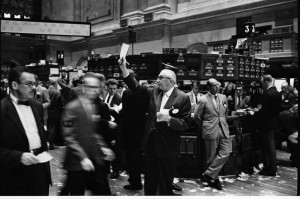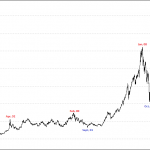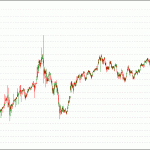
What are Exchange Traded Funds (ETFs)?
Exchange Traded Funds are essentially Index Funds that are listed and traded on exchanges like stocks. An ETF enables investors to gain broad based exposure to entire market/index or specific sectors with relative ease, at a lower cost than many other forms of investing in dematerialized form. In other words, an ETF is a basket of stocks that reflects the composition of an Index, like Nifty50 Index or BankNifty Index. So, ETFs are passively managed funds wherein the fund manager invests the funds in the stocks comprising the index in similar weight. Any investor who wishes to invest in Banking sector can buy Bank ETF which is case of India is BankBees.
Think of it as a Mutual Fund that you can buy and sell in real-time at a price that change throughout the day.
To Know More about ETFs, Read: ETFs? Here’s What You Should Know Before Investing
First-Ever ETF
ETFs were introduced first in the U.S. in 1993 and the first ETF to be listed was Standard & Poor’s Depository Receipts (SPDRs) SPY that correspond generally to the price and yield performance of the S&P 500 Index. The SPY ETF is one of the best large-cap U.S. equities index ETF which is based on top 500 leading companies of United States of America.
How Large is the Global ETFs Market?
ETFs are very popular globally with nearly 60% of trading volumes on the American Stock Exchange (AMEX) captured by ETFs. At the end of July 2014, there were around 5410 ETFs and exchange-traded products (ETPs) in the U.S., with 10,477 listings from 222 providers listed on 60 exchanges and assets worth USD 2.62 trillion and counting. Since 2001, the ETF Global industry has expanded nearly 2000%.
The most popular Global ETFs are QQQs (Cubes) based on the Nasdaq-100 Index, SPDRs (Spiders) based on the S&P 500 Index, I SHARES based on MSCI Indices and TRAHK (Tracks) based on the Hang Seng Index.
ETFs has actually revolutionized the investors way of investing which are helping investors build their portfolio with long term objective to help them manage their risk more wisely and that too at much lower cost.
SPDR S&P 500 ETF (SPY) which has given US investors a great tool to invest in top companies of US companies has now become one of the largest and most heavily-traded ETFs in the world with over $160 billion in assets.
Read: ETFs that Changed the Investing World
Introduction in India
Exchange-Traded Funds (ETFs) are increasingly finding favors in the global financial markets; Foreign Institutional Investors (FIIs) in particular are using ETFs to gain exposure to emerging markets. In India, It has been estimated that a sizable chunk of FII flows comes through offshore and India-focused equity funds and ETFs such as WisdomTree India Earnings Funds, iShares MSCI India ETF, and PowerShares India Portfolio.
In India, the Nifty Benchmark Exchange Traded Scheme (Nifty Bees), was the first ETF to be introduced on December 28, 2001 by Benchmark Mutual Fund.
In fact, ETFs are one of the disinvestment modes proposed by the Indian government for public sector undertakings (PSUs).
ETFs Available for Investing in India
Most ETFs in India are index funds that track indices such as the CNX Nifty50, and CNX Bank Nifty, just to name a few. At present, there are 49 index funds, of which 22 are based on the CNX Nifty Index.
Out of which, LiquidBees, NiftyBees, GoldBees, BankBees & JuniorBees are the most liquid of all.
How do Investors use ETFs?
Exchange-Traded Funds provide the most efficient and low cost ways for investors to construct a well-balanced and diversified portfolio, investors can gain exposure to nearly every corner of the invest-able universe, utilizing very simple and straightforward strategies.
How do I Buy or Sell ETFs?
ETFs can be traded just like stocks by any investor via trading account at any brokerage firm. Brokerage firms charges commission on trading in ETFs, meaning that investors have to pay the typical fee incurred when buying and selling a security.
Benefits of Investing in ETFs
Diversified exposure to manage risk
ETFs offer exposure to a diverse set of individual securities, giving you the benefit of broad exposure within a single asset class or category. And you can find ETFs in every likely asset class – including commodities, in any array of sectors, industries and countries. Diversification, of course, does not ensure a profit or guarantee against a loss.
ETFs allow long term “buy and hold” investors to diversify their portfolio in a broad market by investing in one ETF unit.
Trading Flexibility
ETFs can easily be bought / sold like any other stock anytime during the market hours on the exchange at a price close to actual NAV. You can also place stop-loss and limit orders on ETFs.
Transperancy
Whether the ETF replicates its target index or invests in a representative sample, its “basket” of underlying securities is published every day. So, when you purchase ETFs, you always know exactly what you`re invested in.
While, on the other hand, Mutual funds are only required to disclose their portfolios on a quarterly or semiannual basis.
Lower Cost
As, ETFs are passively managed, they typically have low management fees and operating expenses
Attractive for Small Investors
ETFs may be attractive to small individual investors as they are sized in very small units, i.e. one unit.
Index ETFs Vs Index Futures
ETFs are not futures
Even though ETFs and Futures allow investors exposure to an index, they are different in many regards. While Futures is a derivative product and trades in the F&O segment of NSE, ETFs are a cash market product and trade in the Capital Market segment of NSE. The maximum tenure available for futures is 3 months while ETFs can be held for as long as the investor wants and Index futures are settled in cash at the value of the underlying index on the final settlement day.
ETFs may be attractive to the small individual investor in that they are sized in very small unit sizes. For Example, Nifty Bees are valued at approximately 1/10th the value of the Index. Thus, a single Nifty ETF was quoted at Rs. 800 or approximately 1/10th the value of the CNX Nifty 50 at 7950, on August 28, 2014.
What is Tracking Error?
Cost of ETF
As an ETF tracks a Benchmark Index, the return expectation of an ETF should be same as that of the Index.
For example, say from 1st Jan 2012 to 28th Aug 2014, Nifty rallied from 4624.3 to 7954.35 levels i.e., the Return on Nifty Index is 72% in 32 months, then the return on the ETF that tracks Nifty (Nifty Bees) should also be around 72%. During the same period, Nifty Bees rallied from 470.05 to 806.12, an ROI of 71.48%.
The minor difference in return between the Benchmark Indices (72%) and the ETF NAV (71.48%) could be because of the fact that there would be some cost involved in managing the ETF. This is commonly referred as tracking error.
Things to Know
Market Orders Are A Bad Idea
ETFs can easily be bought / sold like any other stock anytime during the market hours on the exchange at a price close to actual NAV. But there can be drawbacks as well; ETFs change hands not at the NAV of the fund, but at the price that matches up a buyer with a seller. Thus, putting in big market orders to execute at whatever price is available can result in buying at a steep premium or selling at a discount.
Fortunately, the solution is: limit orders. It’s almost always a good idea to enter the price when executing an ETF trade in order to prevent you from executing at an unfavorable price.
Or if you are buying or selling big, you can do it by contacting the AMC to provide liquidity in specific lot sizes as communicated by them regularly, but the problem with them too that they will ask you to sell at a disocunt or buy at few points premium than the current market price.
Bottom Line: Always use limit orders while buying or selling ETFs.
KNOWLEDGE IS POWER!




